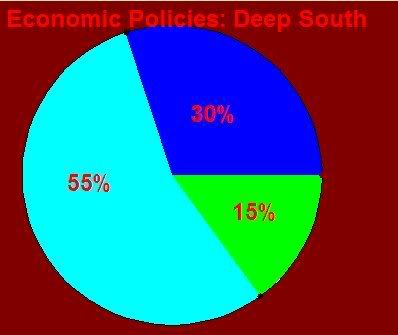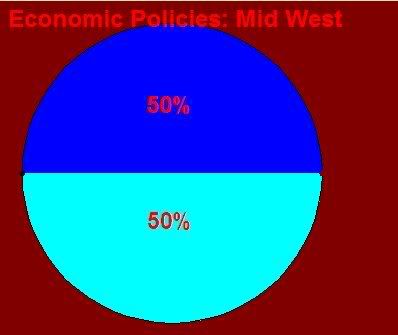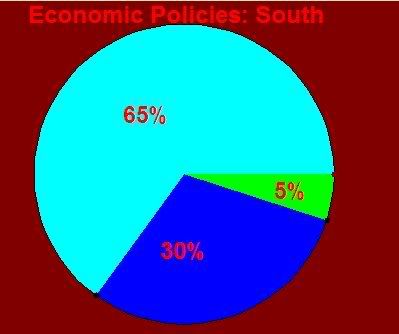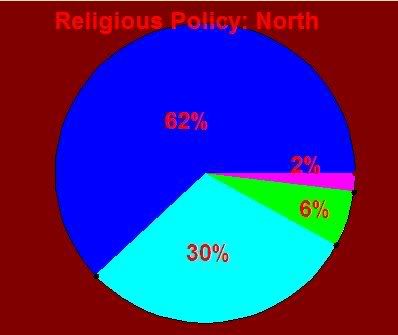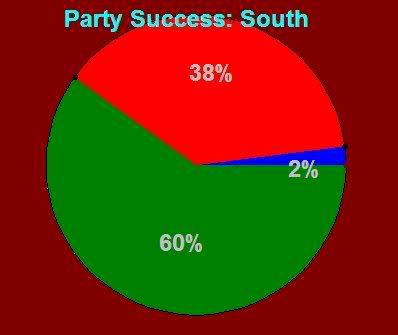The Election of 1892
~~
The Republicans now, for the first time, found themselves on the defensive. The Populists were making a heavy drive at the White House in 1892. The Republicans had to stop the bleed and put up someone to sweep the North and defeat the Populists and Democrats. Benjamin Harrison had already announced his decision not to run again, following in the footsteps of his predecessor Rutherford B. Hayes. The real reason for his decision may have been his failures in stopping the strikes of 1890-91, which put a dark mark on the Republican party's pro-business stance. Harrison, though successful abroad, was taking a great deal of heat for his failures at home, and when the anger started to leak back to the Republicans started to turn against him. The problem was, Harrison had no true successor.
Harrison's vice President, William Windom, died in 1891, which left James G. Blaine as the most likely candidate. But Blaine had already run and failed to win office, which caste him as a black sheep in the party. Charles Foster, Harrison's Secretary of the Treasury, was another popular name. But another Ohio born Republican was the last thing most of the party wanted. The rise of big-business hawk Republicans was stunted, and many felt that a return to the east coast would be best for the party. So it was that the party swung behind James Addams Beaver, the governor of Pennsylvania. Beaver was a civil war veteran and a very popular and successful governor. Beaver had helped end the strikes in Pittsburgh and Philadelphia, and many within the party felt he could bring the same stability to the nation. Beaver chose Vermont Senator George Franklin Edmunds, who had risen to prominence working against big business and authoring Antitrust legislation.

James Addison Beaver
The choice of Edmunds as a running mate sent many western Republicans into a frenzy. Their treasured Republican Party was turning into a worker's party, and many refused to see that happen. Taking up the mantle of the long dead "Whig" party, these "Whig Republicans" promoted their own candidate for office. Russell A. Alger from Michigan became their leading candidate, calling for the status quo and a continued pro-business policy. He chose for his running mate an Ohioan named William McKinley, further promoting the pro-big business stance of the government. Although they spent most of their attention on the mid-west, the two Republicans also started making headway in the east, hoping to cut the Republican lead in Pennsylvania. Congress was still dominated by big business Republicans and would clearly support Alger and McKinley if the country was held from a majority.
The Democrats found themselves in a quandary. The Populist party was rapidly steeling control of the South, especially in the large population states of the South. The long time dominance of Republicans in Texas and the rise of Populists in Virginia drove the Democrats into the Deep South. Alabama, Mississippi and Louisiana were really the only sources of Democratic strength still left. Aided by the exodus of blacks into the west, these states became dominated by Democratic politicians. In an attempt to expand that influence, the Democrats chose the charismatic rabble-rouser Henry Watterson. Called by some the "Successor to Jackson", Henry Watterson swept into the South like a whirlwind, winning support across the board for his pro-south, pro-agriculture proposals. For his vice president he chose Robert Lowry as his vice president.

Henry Watterson
The final candidate selected would come from the Populist party. William Cameron was lauded and proclaimed the obvious success to James Weaver. But Cameron felt his own success was tied to his refusal to enter the political arena. In Cameron's view, Washington corrupted the true beliefs of political reformers. Instead he called for another, refusing to accept the nomination. Unfortunately for Cameron, most of his fellow Populists were too young to successfully run a campaign. Men like James Paul Clarke and William Jennings Bryant were too inexperienced in the political field to win high office. Instead Cameron turned to a fellow Virginian, civil war veteran John W. Daniel, the "(Lame) Lion of Lynchburg". A fiery proponent of worker's rights, Daniel had risen to famous first as a civil war wounded veteran-turned-politician, but as the tide turned towards Populists, he crossed party lines from Democrat to Populist.
Daniel was a clever politician, and immediately turned to the Georgian orator Thomas E. Watson for support. Watson easily won the vice president nomination, proudly shouting from the mountaintops about the great future of the Populist Party. It was Watson who drove the party to fame. With Watson, the Populists were able to carry all of the South-East coast, excluding Florida. He took Texas and Arkansas as well, and carried most of the west including Colombia. The Republicans carried New England, while the Whigs stole Ohio, Michigan and Wisconsin. The Democrats carried what remained, but came in 4th in the election. In the end, by only 12 electoral votes, the Populist Party had succeeded in taking the White House.
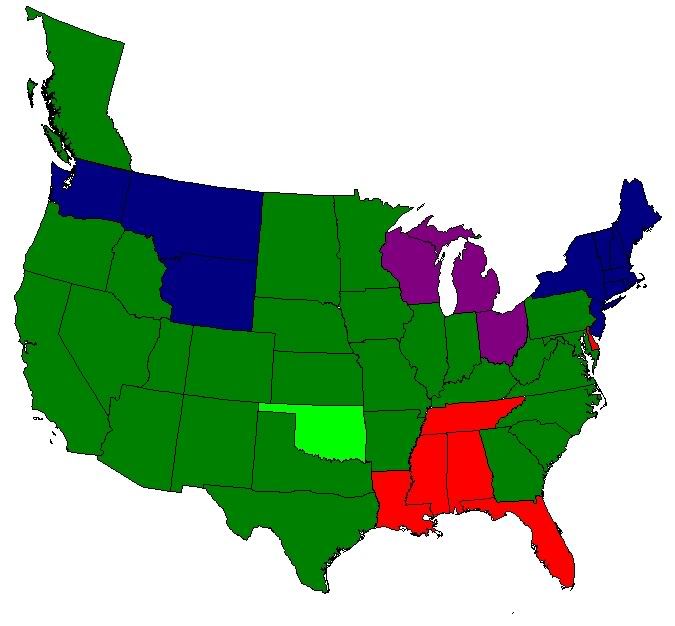
John Daniel and Thomas Watson- Populist- 238
James Beaver and George Edmunds- Republican 117
Russell Alger and William McKinley- Whig- 49
Henry Watterson and Robert Lowery- Democrat- 43
~~
The Republicans now, for the first time, found themselves on the defensive. The Populists were making a heavy drive at the White House in 1892. The Republicans had to stop the bleed and put up someone to sweep the North and defeat the Populists and Democrats. Benjamin Harrison had already announced his decision not to run again, following in the footsteps of his predecessor Rutherford B. Hayes. The real reason for his decision may have been his failures in stopping the strikes of 1890-91, which put a dark mark on the Republican party's pro-business stance. Harrison, though successful abroad, was taking a great deal of heat for his failures at home, and when the anger started to leak back to the Republicans started to turn against him. The problem was, Harrison had no true successor.
Harrison's vice President, William Windom, died in 1891, which left James G. Blaine as the most likely candidate. But Blaine had already run and failed to win office, which caste him as a black sheep in the party. Charles Foster, Harrison's Secretary of the Treasury, was another popular name. But another Ohio born Republican was the last thing most of the party wanted. The rise of big-business hawk Republicans was stunted, and many felt that a return to the east coast would be best for the party. So it was that the party swung behind James Addams Beaver, the governor of Pennsylvania. Beaver was a civil war veteran and a very popular and successful governor. Beaver had helped end the strikes in Pittsburgh and Philadelphia, and many within the party felt he could bring the same stability to the nation. Beaver chose Vermont Senator George Franklin Edmunds, who had risen to prominence working against big business and authoring Antitrust legislation.

James Addison Beaver
The choice of Edmunds as a running mate sent many western Republicans into a frenzy. Their treasured Republican Party was turning into a worker's party, and many refused to see that happen. Taking up the mantle of the long dead "Whig" party, these "Whig Republicans" promoted their own candidate for office. Russell A. Alger from Michigan became their leading candidate, calling for the status quo and a continued pro-business policy. He chose for his running mate an Ohioan named William McKinley, further promoting the pro-big business stance of the government. Although they spent most of their attention on the mid-west, the two Republicans also started making headway in the east, hoping to cut the Republican lead in Pennsylvania. Congress was still dominated by big business Republicans and would clearly support Alger and McKinley if the country was held from a majority.
The Democrats found themselves in a quandary. The Populist party was rapidly steeling control of the South, especially in the large population states of the South. The long time dominance of Republicans in Texas and the rise of Populists in Virginia drove the Democrats into the Deep South. Alabama, Mississippi and Louisiana were really the only sources of Democratic strength still left. Aided by the exodus of blacks into the west, these states became dominated by Democratic politicians. In an attempt to expand that influence, the Democrats chose the charismatic rabble-rouser Henry Watterson. Called by some the "Successor to Jackson", Henry Watterson swept into the South like a whirlwind, winning support across the board for his pro-south, pro-agriculture proposals. For his vice president he chose Robert Lowry as his vice president.

Henry Watterson
The final candidate selected would come from the Populist party. William Cameron was lauded and proclaimed the obvious success to James Weaver. But Cameron felt his own success was tied to his refusal to enter the political arena. In Cameron's view, Washington corrupted the true beliefs of political reformers. Instead he called for another, refusing to accept the nomination. Unfortunately for Cameron, most of his fellow Populists were too young to successfully run a campaign. Men like James Paul Clarke and William Jennings Bryant were too inexperienced in the political field to win high office. Instead Cameron turned to a fellow Virginian, civil war veteran John W. Daniel, the "(Lame) Lion of Lynchburg". A fiery proponent of worker's rights, Daniel had risen to famous first as a civil war wounded veteran-turned-politician, but as the tide turned towards Populists, he crossed party lines from Democrat to Populist.
Daniel was a clever politician, and immediately turned to the Georgian orator Thomas E. Watson for support. Watson easily won the vice president nomination, proudly shouting from the mountaintops about the great future of the Populist Party. It was Watson who drove the party to fame. With Watson, the Populists were able to carry all of the South-East coast, excluding Florida. He took Texas and Arkansas as well, and carried most of the west including Colombia. The Republicans carried New England, while the Whigs stole Ohio, Michigan and Wisconsin. The Democrats carried what remained, but came in 4th in the election. In the end, by only 12 electoral votes, the Populist Party had succeeded in taking the White House.

John Daniel and Thomas Watson- Populist- 238
James Beaver and George Edmunds- Republican 117
Russell Alger and William McKinley- Whig- 49
Henry Watterson and Robert Lowery- Democrat- 43
Last edited:


